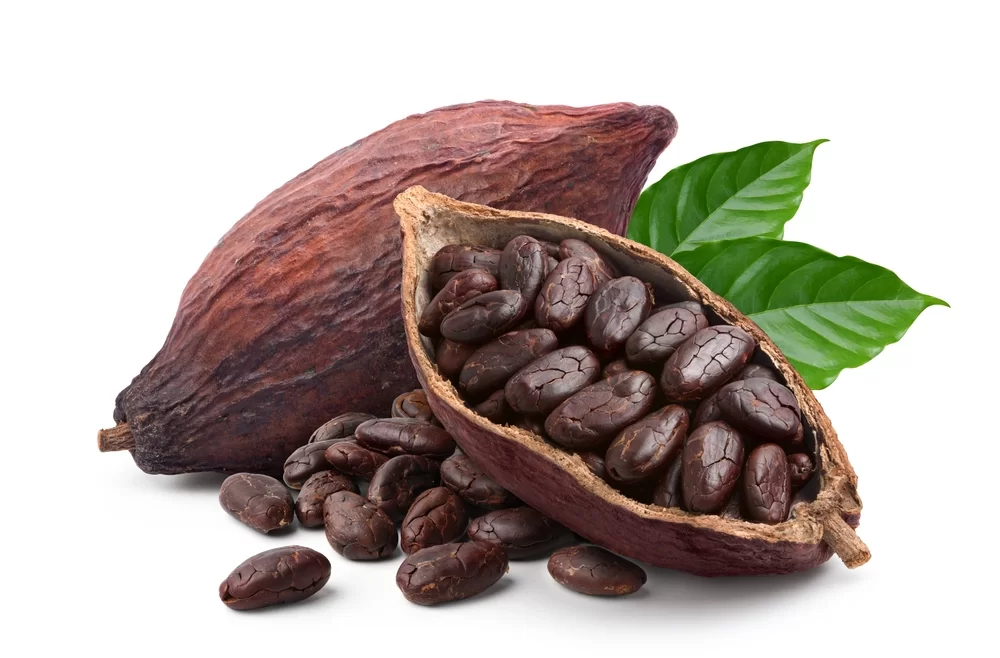In the world of health foods, flavor is frequently the missing ingredient that can make or break a product’s success. Consumers are increasingly aware of the benefits of healthy eating, but sadly, there is a widespread perception that healthy, nutritious foods are bland and unappetizing. Let’s face it, it’s difficult to sustain anything if we don’t find pleasure in it.
The challenge for health food manufacturers is clear: how to create products that are both good for the body and a delight for the taste buds. This is where the expertise of natural flavor scientists comes into play.
By using natural flavors, these experts can turn ordinary health foods into delicious, crave-worthy options that are satisfying and encourage healthier eating habits. In this article, we’ll explore how innovative flavor formulations can enhance the taste of low-calorie meals to create truly enjoyable health foods.
The Importance of Flavor in Health Foods

1. Consumer Perception of Health Foods
When we think of health foods, the words “bland” and “boring” often come to mind. Even for the most health-conscious individuals, taste remains a primary factor in food choice, and this negative perception can be a significant obstacle to adopting healthier diets. Therefore, flavor is both a luxury and a necessity in creating health foods.
2. The Role of Flavor in Nutrition
Flavor plays a major role in the overall eating experience, influencing enjoyment and the perception of nutritional value. It’s easier to believe the food is good for you when it tastes good. This is a psychological connection between flavor and health that can be harnessed to encourage better eating habits.
By enhancing the flavors of health foods, manufacturers can make them more appealing and accessible to help consumers overcome the mental barrier that typically accompanies healthy eating. Moreover, well-crafted flavors can mask or complement the natural taste of healthful ingredients that might otherwise be unappealing, such as certain vegetables or plant-based proteins.
In essence, flavor is a powerful tool in the battle for better nutrition. It can transform health foods from something people feel they should eat into something they want to eat, thereby promoting a more sustainable approach to healthy living.
Understanding Natural Flavors

1. What Are Natural Flavors?
Unlike artificial flavors, which are synthesized in laboratories, natural flavors are derived from real sources such as fruits, vegetables, herbs, spices, and other plant materials. Natural flavors are the essence of taste extracted directly from nature.
These flavors encapsulate the authentic taste of their origin, whether it’s the sweetness of a ripe strawberry, the zest of a lemon, or the warmth of cinnamon.
Natural flavors aim not only to replicate taste, but also to preserve the integrity and complexity of the original ingredient. This distinction is crucial for health food producers, as consumers are increasingly demanding products that are not only healthier but also free from artificial additives.
2. The Science Behind Flavor Creation

Creating natural flavors is both an art and a science. It involves isolating and extracting the specific compounds responsible for a flavor, then blending them to achieve a balanced and consistent taste profile.
This process requires a keen understanding of both the chemistry of flavor compounds and the sensory experience they create. Flavor scientists, or flavorists, use various techniques to enhance or modify natural flavors to suit the specific needs of different health foods.
For example, they might accentuate the sweetness in a fruit flavor to reduce the need for added sugars or include a savory note to make plant-based proteins more pleasing to the palate.
The creation of natural flavors goes beyond mere extraction; it involves innovation and creativity. Scientists can enhance the natural taste of existing ingredients by combining different natural ingredients to develop entirely new flavors. For example, the combination of a citrus fruit with certain herbs can create a refreshing flavor profile that’s perfect for beverages or snacks.
Furthermore, rich, complex flavors that can elevate the taste of even the simplest health foods can be created through the science of reaction flavors—where heat or other processes mimic the natural cooking effects.
This blend of natural ingredients and scientific innovation is key to developing flavors that resonate with consumers and meet their desire for tasty, healthful options. Understanding the science behind natural flavors helps to appreciate the expertise and precision involved in making health foods not just nutritious, but also delicious.
Innovations in Flavor Enhancement

1. Flavor Formulations for Health Foods
The landscape of health foods is evolving, and flavor formulations have become a key element of product development. Today’s consumers want not just healthy options; they want foods to be enjoyable to eat. This demand brought significant innovation in natural flavor enhancement, particularly in crafting formulations that balance taste with nutritional benefits.
In health food production, finding a way to make nutritious ingredients taste great without compromising their health benefits is one of the key challenges. For example, plant-based proteins, which are often essential in health foods, can have strong or unfamiliar flavors that may be off-putting to some consumers.
By developing customized flavor formulations that can enhance natural flavors, mask undesirable tastes, or introduce new flavor notes, flavor scientists help health food manufacturers to make the food more appealing.
Examples of successful natural flavor creations include savory profiles in protein-rich snacks, enhanced natural sweetness in low-sugar products, and the development of vibrant flavors in functional beverages. These innovations improve the taste of health foods and make them more competitive in the market, as consumers increasingly seek products that deliver both health benefits and an enjoyable eating experience.
2. Reaction Flavors and Their Application

Among the most exciting advancements in flavor enhancement is the development of reaction flavors. These are flavors created through controlled chemical reactions that mimic the natural processes of cooking, such as browning, caramelization, or roasting. By replicating these reactions, flavor scientists can produce rich, complex flavors that add depth and authenticity to health foods.
Reaction flavors are particularly useful in applications like the production of plant-based meats, protein bars, and ready-to-eat meals where traditional cooking methods are not feasible.
For example, without altering the product’s nutritional profile, a reaction flavor might be used to give a plant-based burger the savory, grilled taste typically associated with beef, or to add a roasted nutty flavor to a protein bar without the need for actual nuts.
The versatility of reaction flavors enables manufacturers to create a wide range of health food products that meet nutritional standards and offer the taste experiences consumers crave. These innovations are helping to close the gap between nutrition and enjoyment, making it possible to offer health-conscious consumers foods that are as delicious as they are good for them.
Transforming Health Foods with Unique Flavors— Case Studies

1. Liquid Seasonings for Low-Calorie Meals
The use of liquid seasonings is one of the most effective ways to enhance the flavor of low-calorie meals. Concentrated flavor solutions can add depth and complexity to dishes that might otherwise be perceived as bland due to their low fat or reduced sugar content.
For example, a simple vegetable soup can be transformed into a savory, satisfying meal with the addition of a carefully crafted liquid seasoning. By introducing rich umami notes, a hint of spice, or a burst of citrus, these seasonings can make low-calorie foods more delicious without adding significant calories or compromising their health benefits.
- Case Study 1: This approach of liquid seasonings can be seen in the development of a line of low-calorie soups designed for weight management. The challenge was to create soups that were nutritious and low in calories, but also delicious enough to encourage regular consumption.
By incorporating liquid seasonings derived from natural ingredients like miso, tamari, and herbs, the soups were able to deliver a full, satisfying flavor that kept consumers coming back for more. The success of this product line underscores the potential of liquid seasonings to elevate the taste of health foods while maintaining their nutritional integrity.
- Case Study 2: Protein-rich snacks are a staple in the diets of health-conscious consumers, particularly those focused on fitness and muscle building. However, the challenge with many protein-based products is overcoming the natural taste and texture of ingredients like whey, soy, or pea protein, which can be gritty or have a strong, undesirable flavor.
This is where flavor innovation plays a critical role. One notable case involves the creation of a line of plant-based protein bars. These bars were designed to be high in protein, low in sugar, and free from artificial additives. However, their taste led to the initial formulations being met with a lukewarm reception.
To address this, flavor scientists developed a custom blend of natural flavors, including vanilla, cocoa, and a touch of sea salt, which masked the protein’s natural taste and added a rich, indulgent flavor profile. The result was a protein bar that met the nutritional needs of consumers and provided a satisfying taste experience, leading to increased sales and customer loyalty.

- Case Study 3: Another example can be found in the development of flavored protein shakes. Originally, these shakes were functional but lacked the flavor appeal needed to compete with traditional beverages. By incorporating reaction flavors that mimicked the taste of freshly roasted nuts, creamy desserts, chocolate, or even tropical fruits, the flavor profile of these shakes was dramatically improved.
This innovation made the shakes more enjoyable to drink, and also positioned them as a tasty, on-the-go option for health-conscious consumers.
These case studies highlight the transformative power of unique flavors in health foods. By carefully crafting and enhancing flavors, it’s possible to turn nutritionally dense but potentially unpalatable products into delicious, crave-worthy options. This helps to increase consumer acceptance and plays a key role in the success of health food products in a competitive market.
Consumer Trends and Flavor Preferences

1. Growing Demand for Natural and Organic Flavors
Consumers are becoming increasingly health-conscious, and there has been a significant shift toward natural and organic flavors in the food industry. Today’s consumers are not only interested in the nutritional content of their food, but also in the ingredients used to create it.
The demand for clean labels—products free from artificial additives, preservatives, and flavors—has never been higher. This trend is particularly strong among millennials and Gen Z, who prioritize transparency and sustainability in their purchasing decisions.
This shift represents both a challenge and an opportunity for health food producers. On one hand, there is a need to move away from artificial flavoring agents, which have traditionally been used to enhance taste while keeping costs low. On the other hand, the growing market for natural and organic products presents a chance to innovate and differentiate.
By tapping into natural flavors derived from organic sources, manufacturers can appeal to consumers seeking purity and authenticity in their food choices. Moreover, the trend toward natural and organic flavors is closely tied to broader concerns about sustainability and environmental impact.
Consumers are increasingly seeking products that align with their values, including ethical sourcing and environmentally friendly practices. This means that the origin of natural flavors—whether they come from sustainably harvested plants or organically grown herbs—can significantly influence consumer preferences and purchasing decisions.
2. Tailoring Flavors to Global Tastes

In addition to the demand for natural and organic options, there is a growing interest in global flavors.
Consumers are increasingly exposed to diverse cuisines and flavor profiles, which leads to a desire for more adventurous and culturally authentic tastes in their health foods. Fusion flavors that mix elements from different culinary traditions to create something fresh and exciting are a prime example of this trend.
For example, a health food product might combine the zesty flavors of Mexican cuisine with the aromatic spices of Indian cooking, resulting in a unique taste experience that appeals to a broad audience. Similarly, flavors inspired by Asian cuisines, such as umami-rich miso or the tangy notes of tamarind, and Japanese Teriyaki are gaining popularity in health foods ranging from snacks to ready-to-eat meals.
These global flavors satisfy consumers’ desire for novelty and allow health food brands to tap into the rich culinary traditions of different cultures. Tailoring flavors to global tastes also involves understanding regional preferences and dietary habits.
In some places, some people like stronger flavors, while others like milder and sweeter ones. By customizing flavor offerings to suit these preferences, health food producers can create products that resonate more deeply with local consumers.
Global and local tastes are influencing the future of health food, and consumers continue to look out for new and exciting taste experiences. A key to success in health food production and marketing is the ability to innovate and adapt flavors to meet these evolving preferences.
Whether it’s through the use of natural and organic ingredients or the incorporation of global culinary influences, the focus on flavor is more important than ever in capturing the hearts and palates of health-conscious consumers.
The Future of Flavor Innovation in Health Foods

1. Predicting Emerging Flavor Trends
Flavor innovation is expected to play an increasingly vital role in meeting consumer demands as the health food industry continues to evolve.
The future of flavor in health foods will be shaped by several key trends. There is an increasing interest in bold, unconventional flavors that push the boundaries of traditional taste profiles. Consumers are seeking new and unexpected flavor experiences that go beyond the familiar, as they become more adventurous in their eating habits.
Examples include flavors that incorporate bitter, sour, or umami elements are gaining traction as consumers explore the complex taste profiles often found in savory snacks, fermented foods, and dark chocolate.
These flavors provide a unique sensory experience, but they are also associated with various health benefits, such as improved digestion or enhanced nutrient absorption. Additionally, the rise of functional foods—products designed to offer specific health benefits—will likely drive demand for flavors that complement and enhance the efficacy of active ingredients, such as adaptogenic herbs, probiotics, and plant-based proteins.
Another growing trend is the fusion of flavors from different cultural traditions, creating hybrid taste experiences that appeal to a globalized palate. This trend is expected to continue as consumers seek products that reflect their diverse culinary interests and cater to their desire for novel, exciting flavors.
2. The Role of Technology in Flavor Development
The advancements in technology are poised to transform the process of flavor development and delivery in health foods.
- AI: One of the most promising areas of innovation is the use of artificial intelligence (AI) and machine learning in flavor creation. These technologies allow flavor scientists to analyze vast amounts of data on consumer preferences, ingredient interactions, and sensory profiles. This enables them to design highly customized flavors that precisely match the target audience’s taste preferences.
For example, AI can help identify the optimal combination of natural ingredients to create a specific flavor profile or suggest novel flavor pairings that might not have been considered using traditional methods. This data-driven approach to flavor development accelerates the innovation process and increases the likelihood of creating flavors that resonate with consumers.

- Biotechnology is another field that is poised to impact flavor innovation. Advances in fermentation and bioengineering are opening up new possibilities for producing natural flavors in a more sustainable and scalable manner.
For example, companies are exploring the use of genetically modified microorganisms to produce flavor compounds that are identical to those found in nature, offering a more consistent and cost-effective alternative to traditional extraction methods. This approach can also help address supply chain challenges, such as the limited availability of certain natural ingredients due to seasonal fluctuations or environmental concerns.
- Encapsulation is another type of technology that is likely to play a significant role in the future of flavor delivery. Encapsulation involves coating flavor compounds in a protective layer, which can control the release of flavors in the mouth or extend the shelf life of products.
This technology allows for more precise flavor delivery, ensuring that health foods retain their taste and aroma over time, even in challenging storage conditions.
Continued health food market expansion will define the future of flavor innovation by a combination of emerging trends and technological advancements. By staying on top of these developments, flavor scientists and health food producers can create products that meet the changing demands of consumers and set new standards for taste and enjoyment in the health food industry.
The intersection of creativity, science, and technology will drive the next generation of flavors, making healthy eating an increasingly delicious experience.
Conclusion
As the health food industry continues to grow, the importance of creating unique flavors cannot be overstated. Consumers are no longer willing to sacrifice taste for nutrition—they want both.
Through innovative flavor formulations, natural and organic ingredients, and cutting-edge technologies, it is possible to create health foods that are not only good for the body but also a delight to the senses. By embracing these advancements, health food manufacturers can meet the evolving demands of consumers, offering products that are both nutritious and irresistibly delicious.
The future of health foods lies in the perfect harmony of taste and wellness, and unique flavor innovation is the key to unlocking this potential.






